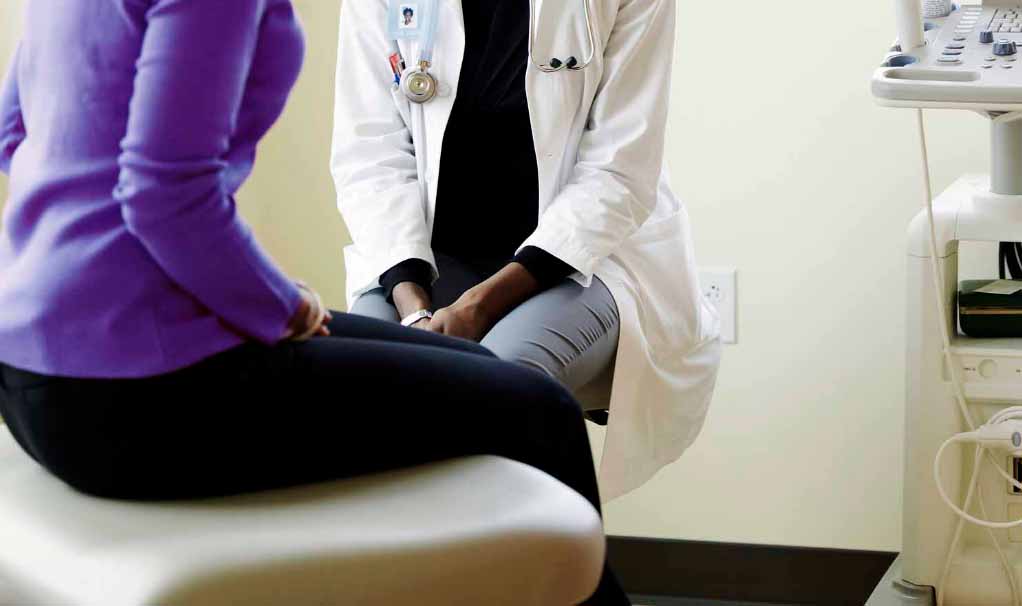A screening pelvic exam, also known as a well woman exam, is a common procedure. Some women are reassured when they find that the results are negative, while others would prefer to avoid one. On July 1, the American College of Physicians (ACP) published an article in their journal, Annals of Internal Medicine, that noted that routine pelvic exams do not benefit women who have no symptoms of disease and who are not pregnant; furthermore, it noted that the exam can cause harm.
The guidelines were based on a review of the published literature in the English language from 1946 through January 2014. The investigators assessed outcomes based on morbidity (harmful consequences), mortality (death, and harms, including overdiagnosis, overtreatment, diagnostic procedure–related harms, fear, anxiety, embarrassment, pain, and discomfort. The investigators concluded that pelvic exams are appropriate for women with symptoms such as vaginal discharge, abnormal bleeding, pain, urinary problems, or sexual dysfunction. In addition, they recommended that have a Pap smear taken at recommended intervals; however, they noted that having a Pap smear taken does not need to include the bimanual pelvic exam.
Taking a Pap smear involves placing a speculum in the vagina and taking a scraping from the cervix to obtain cells for examination. In addition, the cervix can be visualized to detect abnormalities such as inflammation. With a bimanual exam, a physician places two fingers in the vagina and palpates the pelvic area with the other. Enlargement or abnormalities of the uterus, fallopian tubes, and ovaries can be detected. The authors note that for symptom-free women, the data they reviewed revealed that routine pelvic exams are not useful to screen for ovarian or other gynecologic cancers, they do not reduce deaths, and there are other methods, such as urine tests, to detect such problems as sexually transmitted diseases (STDs). In addition, they noted that pelvic exams can cause harm due to unnecessary and expensive extra testing when the exam is abnormal. They also noted that the exam causes anxiety, embarrassment, and discomfort, especially survivors of sexual abuse.
In conclusion, the authors wrote: “ACP recommends against performing screening pelvic examination in asymptomatic, nonpregnant, adult women (strong recommendation, moderate-quality evidence).”
Take home message:
Currently, the American College of Obstetricians and Gynecologists, an organization I belong to, recommends annual pelvic exams. The exam usually takes a matter of minutes (often less than a minute) and discomfort is minimal unless a woman is tense or has a painful pelvic condition. An alternative approach for a woman who is uncomfortable undergoing a bimanual exam is an ultrasound exam, which can image the pelvic structures. It also can be used on children and virgins. Many gynecologists have an ultrasound machine in their office; thus, it does not require a visit to an imaging center.
In my experience, most exams reveal no abnormalities; however, occasionally an asymptomatic abnormality such as an ovarian cyst or enlargement (benign or malignant) or fibroid tumors of the uterus. Sometimes, an ultrasound exam or other tests are necessary; on other occasions, routine follow-up can be done. Fibroid tumors are a common abnormal finding during a routine pelvic exam. They often can be followed by routine exams and/or an ultrasound. They are rarely malignant. Ovarian cysts are occasionally discovered during an exam. Most are benign and an ultrasound exam can determine the malignancy risk (a single, fluid –filled cells is most likely benign, while multiple cystic and solid areas are suspicious for malignancy). Many benign cysts resolve over time; however, they can twist and pinch off their blood supply. Surgery is required if this occurs.
Although the authors note that urine tests can check for STDs; this is inaccurate. The best method to check for an STD is a culture and/or examination of vaginal fluid or cervical material. Blood tests are also of value. In summary, although the authors are correct that most routine pelvic exams are normal, the occasional detection of an abnormality that needs attention warrants the few minutes it takes to undergo one.




